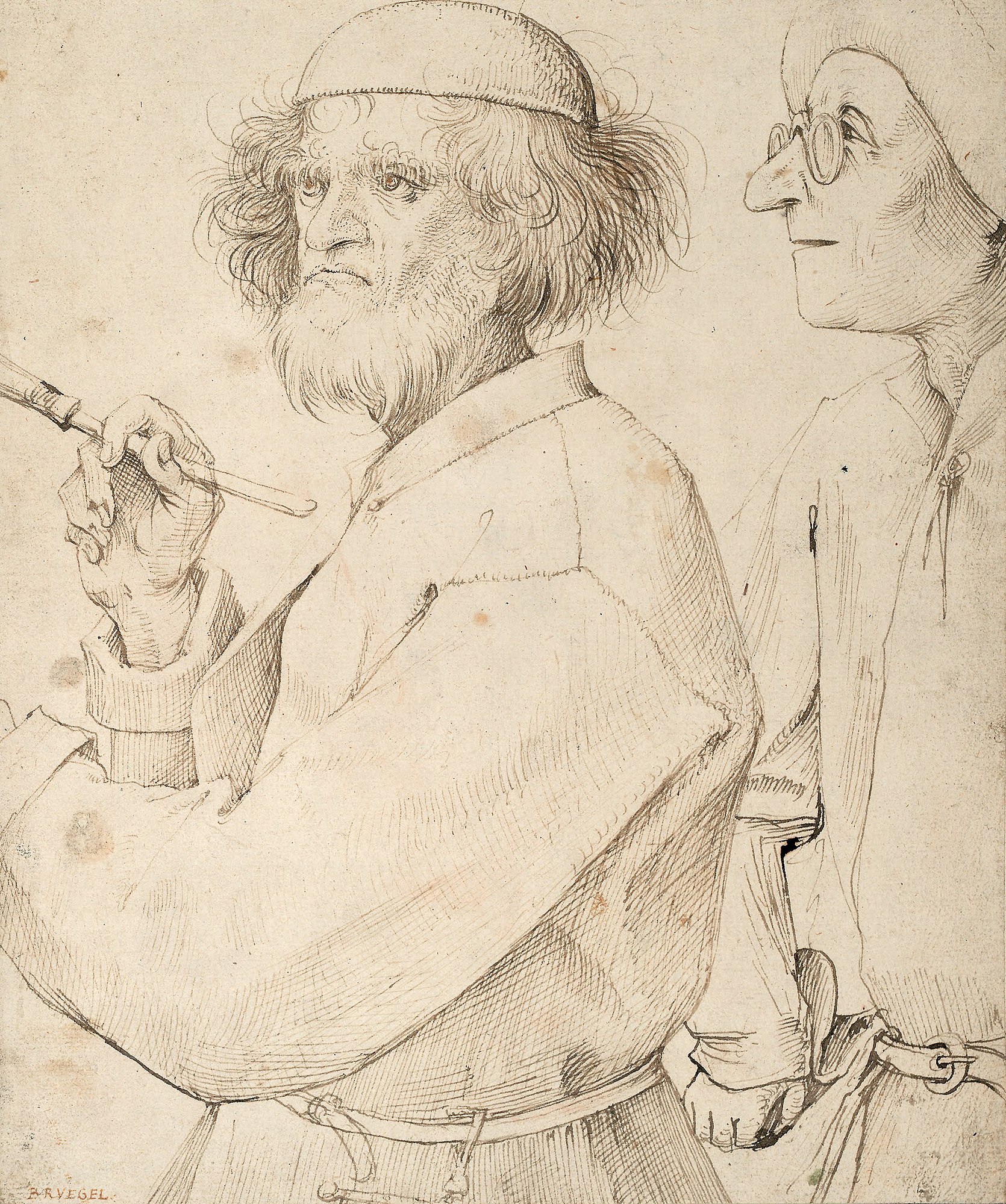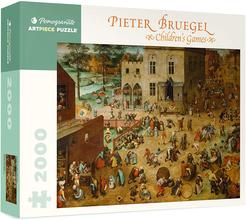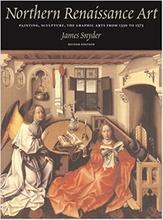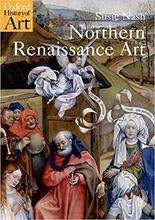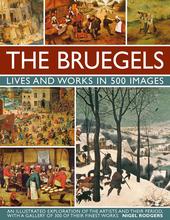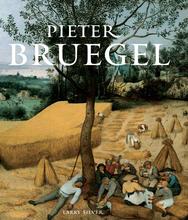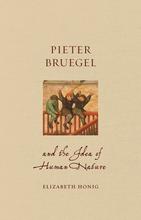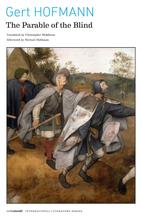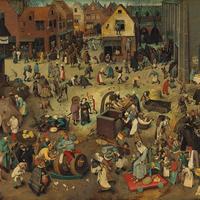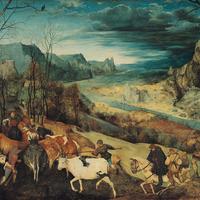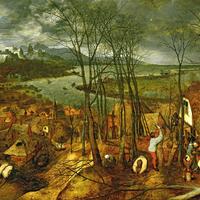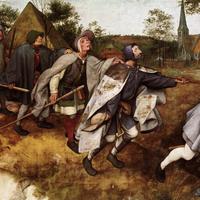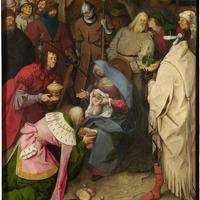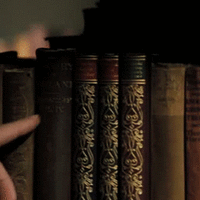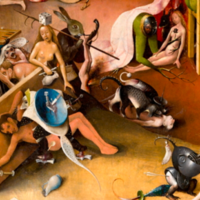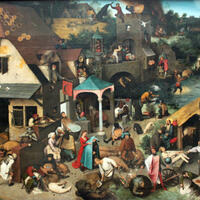More about Pieter Bruegel the Elder
- All
- Info
- Shop
Works by Pieter Bruegel the Elder

Sr. Contributor
Pieter Bruegel the Elder loved to party.
He's basically the 16th century Flemish artist equivalent of The Wedding Crashers. The only thing he loved more than partying was painting other people partying.
Like Wilson and Vaughn, Bruegel had an alter ego for carousing. He dressed up as a peasant, then found whatever local barn raising or wedding or christening, or whatever, was going on that day and left his problems at the manor. Some clarification of 'dressed up as a peasant' is necessary because he came from old money. Suffice it to say that he wouldn't need a loan for art school, and he wouldn't be living in the dorms unless he wanted to (he would want to). He was cavorting as a peasant so often that he gained the nickname Peasant Bruegel. That probably isn't a strain of nicknames someone could get away with today. "Hey everyone, Poverty Susan is coming to our party!" Despite crashing peasant soirees for inspiration and focusing a plurality of works on the minutiae of their festivities, most of his patrons were scholars and wealthy businessmen. Not to be too harsh...but that kind of makes Peasant Bruegel a sell-out.
Another favorite subject of his, though you'd never expect it, was The Spanish Inquisition. Bruegel wasn't a fan. The Spanish were running amok throughout the Low Countries, putting good God-fearing folk to the dish rack left and right for not believing in God properly. However, the Inquisition didn't even try censoring OR censuring Bruegel. It seemed he was untouchable. It probably didn't hurt, though, that his most fervent patrons were the Habsburgs in Vienna (which is why a full third of his extant works are available for viewing in Austria instead of Belgium or The Netherlands). The Habsburgs were also the family on the throne in Spain, instigating the Inquisition. This leaves open the question of whether The Spanish Inquisition was really just a ploy by the Habsburgs to push Bruegel toward greater artistic success for their own enrichment. The only answer seems to be DIABOLICAL LAUGHTER.
Peasant Bruegel is also the progenitor and unquestionably best painter of an artistic dynasty stretching four generations. It all started when Bruegel married his teacher's daughter, Mayken. Their sons, Pieter Bruegel the Younger and Jan Bruegel the Elder, would go on to achieve recognition through their own painting careers. However, with their father dead by the time they were young children, Pete Sr's influence on the brats is minimal. They were taught by Mayken's mother, famous for her tempera works and, also, an established artist. Whenever the boys asked about their father, it's easy to imagine Mayken tearing up, staring into the distance and saying, "History will remember him... for his keg stands."
Featured Content
Here is what Wikipedia says about Pieter Bruegel the Elder
Pieter Bruegel (also Brueghel or Breughel) the Elder (/ˈbrɔɪɡəl/ BROY-gəl,
US also /ˈbruːɡəl/ BROO-gəl;
Dutch: [ˈpitər ˈbrøːɣəl] ⓘ; c. 1525–1530 – 9 September 1569) was among the most significant artists of Dutch and Flemish Renaissance painting, a painter and printmaker, known for his landscapes and peasant scenes (so-called genre painting); he was a pioneer in presenting both types of subject as large paintings.
He was a formative influence on Dutch Golden Age painting and later painting in general in his innovative choices of subject matter, as one of the first generation of artists to grow up when religious subjects had ceased to be the natural subject matter of painting. He also painted no portraits, the other mainstay of Netherlandish art. After his training and travels to Italy, he returned in 1555 to settle in Antwerp, where he worked mainly as a prolific designer of prints for the leading publisher of the day. At the end of the 1550s, he made painting his main medium, and all his famous paintings come from the following period of little more than a decade before his early death in 1569, when he was probably in his early forties.
In the 20th and 21st centuries, Bruegel's works have inspired artists in both the literary arts and in cinema. His painting Landscape with the Fall of Icarus, now thought only to survive in copies, is the subject of the final lines of the 1938 poem "Musée des Beaux Arts" by W. H. Auden. Russian film director Andrei Tarkovsky refers to Bruegel's paintings in his films several times, including Solaris (1972) and Mirror (1975). Director Lars von Trier also uses Bruegel's paintings in his film Melancholia (2011). In 2011, the film The Mill and the Cross was released featuring Bruegel's The Procession to Calvary.
Check out the full Wikipedia article about Pieter Bruegel the Elder

